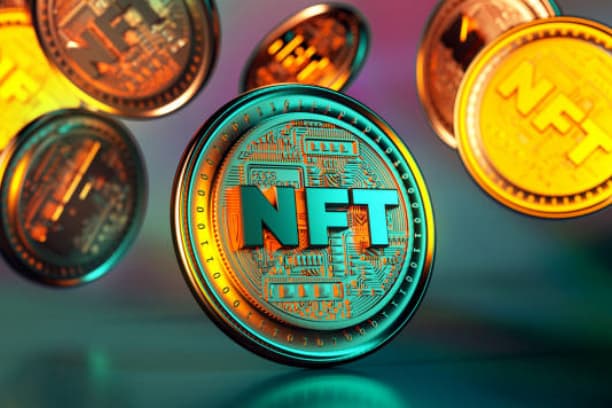There are many different operating models for blockchain projects, each with its own unique profitability and growth strategy. Understanding these models is crucial for both investors and project parties. In this article, we will dive into the different blockchain project operating models, analyze how they can be profitable, and provide concrete examples to help you understand. Whether it is the exchange model, decentralized finance (DeFi) or NFT platform, etc., we will analyze the details and challenges of these models in actual operation.

1. Basic operating model of a blockchain project
Blockchain projects usually have several operating models, each of which differs according to its characteristics and target market. The main operating models can be categorized as follows:
1.1 Exchange model
Exchanges are one of the most common operating models for blockchain projects. Its main method of profitability is through transaction fees. Exchange platforms allow users to buy and sell different cryptocurrencies, and the platforms take a percentage of each transaction as a commission. For example, transaction fees for platforms such as Coin and Firecoin have become their main source of revenue.
1.2 Decentralized Finance (DeFi) Model
DeFi refers to decentralized finance, replacing traditional financial intermediaries, such as banks or securities firms, with smart contracts.DeFi platforms usually provide services such as lending, pledging, and liquidity provision, and make profits by charging interest and fees. Take Aave and Compound for example, these platforms attract user funds and generate revenue through the mechanism of liquidity pools and lending markets.
1.3 Non-Homogenized Token (NFT) Platform Model
NFT platforms have been growing rapidly in recent years, making profits from the buying and selling of digital artwork, virtual goods, etc. NFT platforms realize profits through transaction fees, auction commissions, etc. For example, OpenSea is a typical NFT trading platform, which charges users transaction fees as a source of income.
1.4 Mining Pools and Mining Models
The mining pool model is used for cryptocurrency mining by providing arithmetic support. Mining pools gather a large amount of arithmetic power to jointly mine blocks and share the revenue. For miners, the mining pool provides a higher success rate and a stable income, while the mining pool operator receives a certain amount of management fees and a share of the profits.
2. How blockchain projects can be monetized
The profit model of a blockchain project is not limited to direct transaction revenue, but there are many indirect ways to profit. Understanding these ways of profitability is crucial for the long-term development of the project.
2.1 User fees
For many blockchain projects, user fees are their main source of profit. For example, exchanges and decentralized trading platforms mostly rely on commission revenue. Platforms charge a certain percentage of commission by introducing users' trading behavior, which is a more profitable approach and can gradually increase revenue as the number of users increases.
2.2 Pledge and interest
Many blockchain projects attract funds by offering a pledge service, where the platform promises users a certain amount of interest or rewards.The DeFi project is monetized in this way. Users lock up their assets on the platform, and the platform utilizes these funds to invest or lend, earning interest and then giving it back to the users and the platform itself.

2.3 Token appreciation
Many blockchain projects are financed through the issuance of native tokens (Token), which increase in value as the market heats up and application scenarios increase over the course of the project's development. Project owners can raise funds through pre-sales, ICOs (Initial Token Offerings), or other forms of financing, and then drive the price of the tokens up based on market demand, from which they can realize a profit.
2.4 Services and value-added products
Some blockchain projects monetize by providing value-added services, such as wallets, blockchain browsers and other additional services. Project owners further monetize these services by acquiring user traffic, data or providing customized services for a fee. For example, some blockchain technology companies provide services such as blockchain technology development and customized application development for other enterprises, from which they receive project fees.
2.5 Data transactions
As the application of blockchain technology becomes more and more widespread, data trading has also become a new profit model. Data storage on the blockchain is highly transparent and secure, so some project parties will choose to gain revenue by trading this data. For example, on-chain data can be used for optimization in industries such as advertising, marketing, or supply chain, providing the needy parties with access to the data.
3. Operational strategies and challenges of blockchain projects
In addition to the profit model, the operation strategy of the blockchain project also needs to be carefully planned. Due to the fierce competition in the market, project owners not only need to have a sustainable profit model, but also need to pay attention to market dynamics and user needs.
3.1 Community Building
The success of blockchain projects is often dependent on strong community support. Project owners need to interact with users through various channels to build a loyal user base. Whether through social media, Telegram groups, or regular AMA (Ask Me Anything) events, community building requires a constant investment of time and resources.
3.2 Innovation and technology development
Technological innovation is one of the core factors for the success of a blockchain project. Project parties need to continuously advance technology development, optimize platform performance and improve user experience. For example, in the field of DeFi, the security and efficiency of smart contracts are very critical, and project parties need to invest a lot of resources in auditing and improvement.
3.3 Regulations and Compliance
With the rapid development of the cryptocurrency market and the gradual tightening of regulatory policies, blockchain projects are also facing compliance challenges. Project parties need to pay close attention to changes in regulations at home and abroad, and adjust their operation mode in a timely manner to ensure compliance with legal requirements and avoid being penalized for violations of the law.
3.4 Cross-chain cooperation and interoperability
With the development of blockchain technology, cross-chain cooperation is gradually becoming a trend. The interoperability between different chains provides more development opportunities for project parties. Project parties can expand their ecosystems and enhance the liquidity and value of their projects by cooperating with other chains.
concluding remarks
The profit models and operational strategies for blockchain projects are varied, each with its own unique advantages and challenges. From exchanges to DeFi, to NFTs and mining pools, each model has its room for development. Project owners must make precise decisions based on market demand, technical capabilities, and user base when choosing the right operating model. As for investors, understanding these different models can help them better judge the feasibility and potential returns of their projects.







